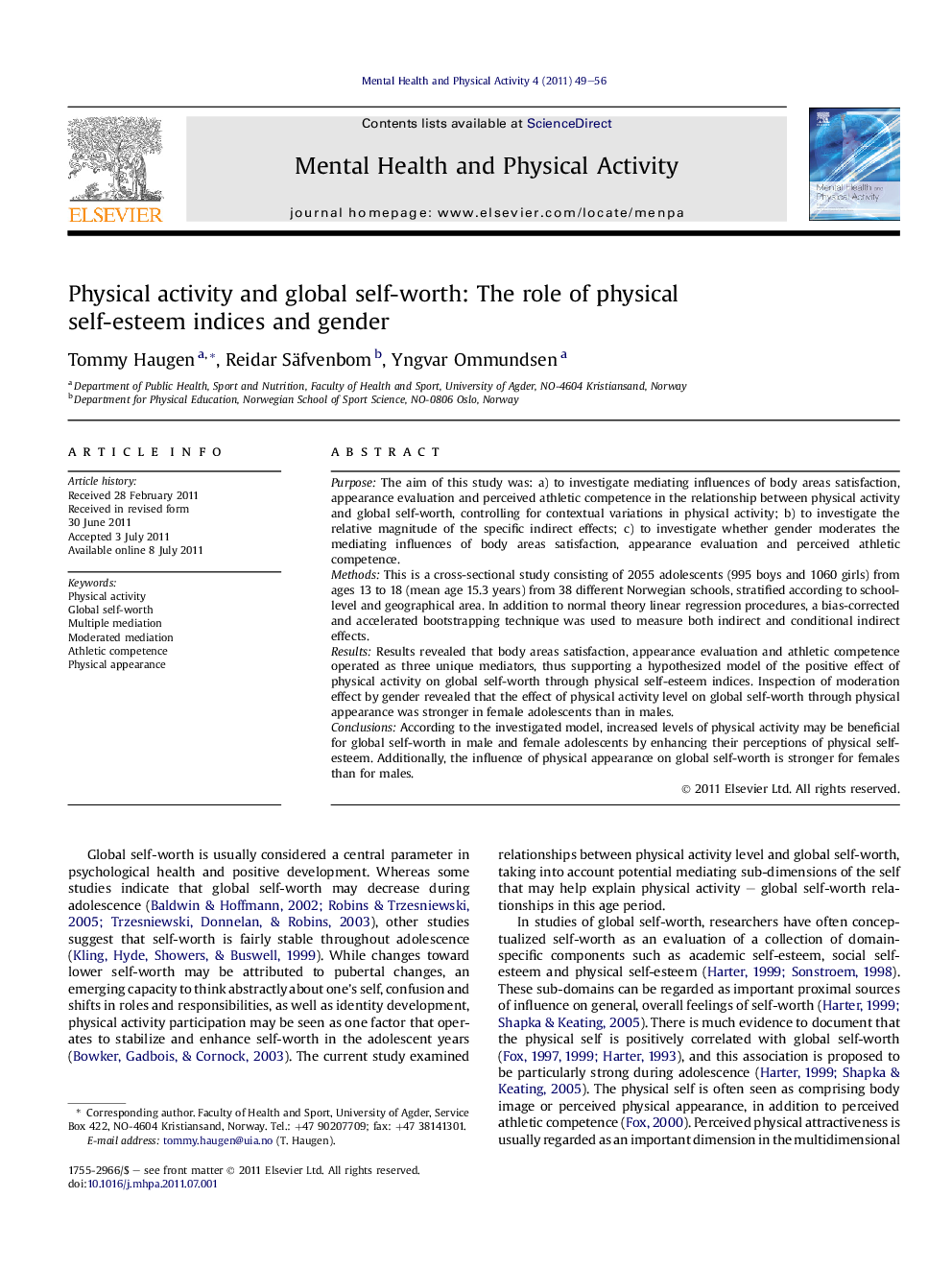| کد مقاله | کد نشریه | سال انتشار | مقاله انگلیسی | نسخه تمام متن |
|---|---|---|---|---|
| 913585 | 918330 | 2011 | 8 صفحه PDF | دانلود رایگان |

PurposeThe aim of this study was: a) to investigate mediating influences of body areas satisfaction, appearance evaluation and perceived athletic competence in the relationship between physical activity and global self-worth, controlling for contextual variations in physical activity; b) to investigate the relative magnitude of the specific indirect effects; c) to investigate whether gender moderates the mediating influences of body areas satisfaction, appearance evaluation and perceived athletic competence.MethodsThis is a cross-sectional study consisting of 2055 adolescents (995 boys and 1060 girls) from ages 13 to 18 (mean age 15.3 years) from 38 different Norwegian schools, stratified according to school-level and geographical area. In addition to normal theory linear regression procedures, a bias-corrected and accelerated bootstrapping technique was used to measure both indirect and conditional indirect effects.ResultsResults revealed that body areas satisfaction, appearance evaluation and athletic competence operated as three unique mediators, thus supporting a hypothesized model of the positive effect of physical activity on global self-worth through physical self-esteem indices. Inspection of moderation effect by gender revealed that the effect of physical activity level on global self-worth through physical appearance was stronger in female adolescents than in males.ConclusionsAccording to the investigated model, increased levels of physical activity may be beneficial for global self-worth in male and female adolescents by enhancing their perceptions of physical self-esteem. Additionally, the influence of physical appearance on global self-worth is stronger for females than for males.
► The association between physical activity and global self-worth in adolescents.
► Physical activity affects global self-worth through physical self-esteem indices.
► Appearance evaluation, body areas satisfaction, and athletic competence were unique mediators.
► The appearance dimensions were more important in females compared to males.
► No gender differences in athletic competence.
Journal: Mental Health and Physical Activity - Volume 4, Issue 2, December 2011, Pages 49–56